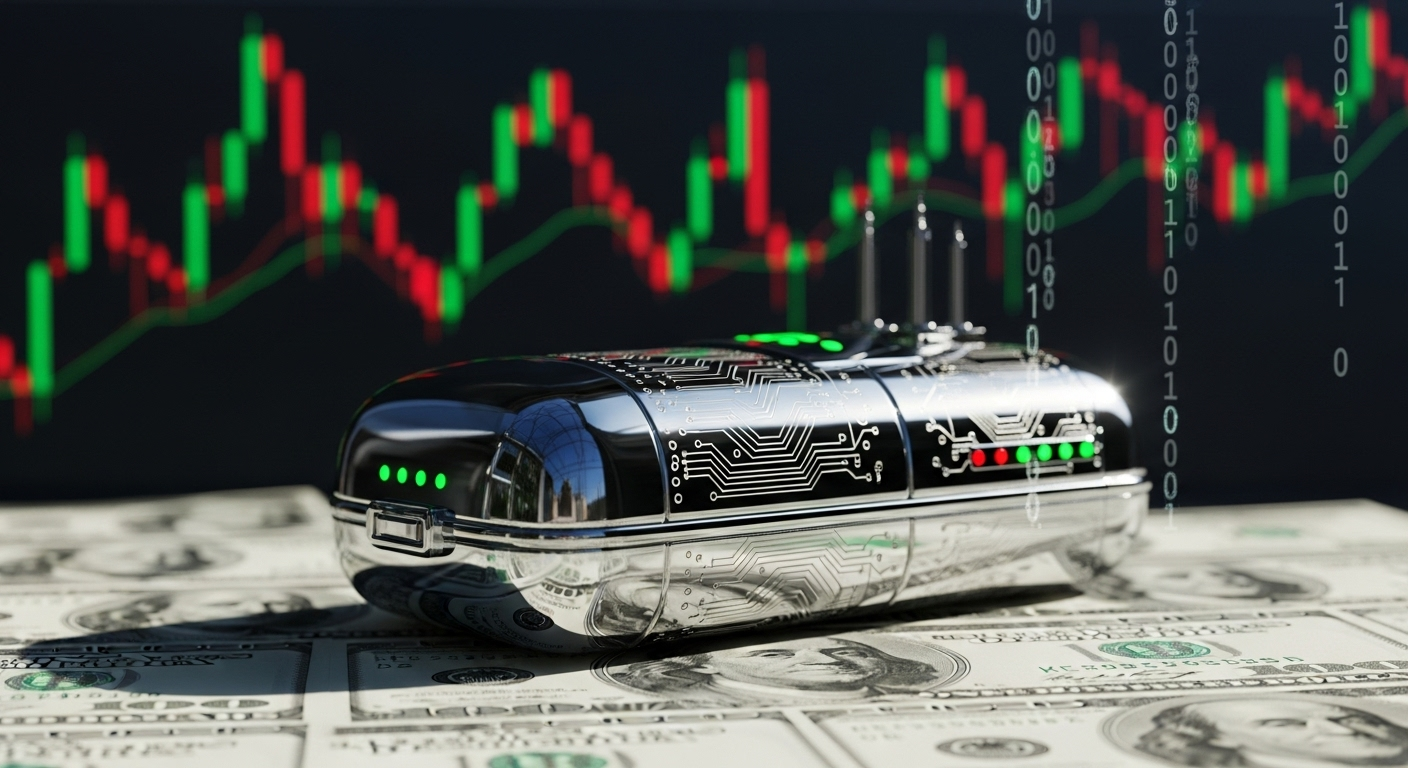Imagine generating income while you sleep, travel, or focus on other ventures. With a forex trading robot, this dream can become a reality. These sophisticated tools are designed to automate your trading strategy, potentially leading to consistent profits with minimal effort. Are you ready to explore the exciting world of automated forex trading and discover how a forex trading robot can pave your way to financial freedom?
This article delves into the world of forex trading robots, exploring their capabilities, benefits, and potential challenges. We’ll guide you through selecting the right robot, setting it up for success, and managing the associated risks. Get ready to unlock the potential of passive income with the power of automation!
Jump To Section:
- Understanding Forex Trading Robots: Are They Right for You?
- How Forex Trading Robots Can Automate Your Trading Strategy
- Top Features to Look for in a Forex Trading Robot
- Setting Up and Testing Your Forex Trading Robot
- Managing Risk with a Forex Trading Robot
- The Pros and Cons of Using a Forex Trading Robot
- Optimizing Your Forex Trading Robot for Maximum Profit
- Ethical Considerations When Using a Forex Trading Robot
- Conclusion
Understanding Forex Trading Robots: Are They Right for You?
Forex trading robots, also known as Expert Advisors (EAs), are software programs designed to automatically execute trades on your behalf based on predefined rules and algorithms. They analyze market data, identify potential trading opportunities, and execute buy or sell orders without manual intervention. But are they suitable for you? Consider your trading experience, risk tolerance, and capital availability. If you’re seeking a hands-off approach to forex trading, a well-chosen and properly managed forex trading robot could be a valuable asset. However, remember that no robot guarantees profits, and careful monitoring is always essential.
How Forex Trading Robots Can Automate Your Trading Strategy
The core function of a forex trading robot is to automate your trading strategy. This involves programming the robot with specific rules, indicators, and risk parameters that align with your trading goals. For example, you can instruct the robot to open a trade when the RSI indicator crosses a certain level or to close a position when a specific profit target is reached. By automating these processes, you eliminate emotional decision-making and ensure consistent execution of your strategy, even when you’re not actively monitoring the market.
Top Features to Look for in a Forex Trading Robot
When selecting a forex trading robot, consider these key features:
- Backtesting Capabilities: The robot should allow you to test its performance on historical data to assess its profitability and identify potential weaknesses.
- Customization Options: The robot should offer flexibility in adjusting parameters such as risk levels, trading indicators, and currency pairs.
- Risk Management Tools: Look for features like stop-loss orders, take-profit levels, and drawdown limits to protect your capital.
- User-Friendly Interface: The robot should be easy to set up, configure, and monitor, even for novice traders.
Setting Up and Testing Your Forex Trading Robot
Setting up a forex trading robot typically involves installing it on a trading platform like MetaTrader 4 or MetaTrader 5. Once installed, you’ll need to configure the robot with your desired settings and connect it to your trading account. Before deploying the robot on a live account, it’s crucial to thoroughly test it on a demo account. This allows you to evaluate its performance in a simulated environment and make any necessary adjustments without risking real capital.
Managing Risk with a Forex Trading Robot
While forex trading robots can automate your trading, they don’t eliminate risk. It’s essential to implement robust risk management strategies to protect your capital. This includes setting appropriate stop-loss orders, limiting your exposure per trade, and regularly monitoring the robot’s performance. Remember that no robot is foolproof, and market conditions can change unexpectedly. Diversification is also key; you should not rely solely on one forex trading robot for all your trading activities.
The Pros and Cons of Using a Forex Trading Robot
Like any trading tool, forex trading robots have their advantages and disadvantages:
- Pros: Automation, emotional detachment, 24/7 trading, backtesting capabilities.
- Cons: Potential for losses, reliance on algorithms, need for monitoring, risk of over-optimization.
Carefully weigh these pros and cons before deciding whether a forex trading robot is right for you.
Optimizing Your Forex Trading Robot for Maximum Profit
To maximize the profitability of your forex trading robot, continuous optimization is essential. This involves analyzing its performance, identifying areas for improvement, and adjusting its parameters accordingly. Regular backtesting, forward testing, and monitoring of market conditions are crucial for successful optimization. Be careful not to over-optimize the robot, as this can lead to poor performance in live trading.
Ethical Considerations When Using a Forex Trading Robot
While forex trading robots can be powerful tools, it’s important to use them ethically. Avoid using robots that make unrealistic promises or engage in deceptive practices. Be transparent about your use of robots and avoid manipulating the market or exploiting other traders. Responsible and ethical use of forex trading robots contributes to a fair and sustainable trading environment.
Conclusion
A forex trading robot can be a powerful tool for automating your trading strategy and potentially generating passive income. However, success requires careful selection, proper setup, diligent monitoring, and robust risk management. By understanding the capabilities and limitations of forex trading robots, you can harness their power to achieve your financial goals in the dynamic world of forex trading. Embrace the future of trading and unlock the potential of automated forex trading today!



